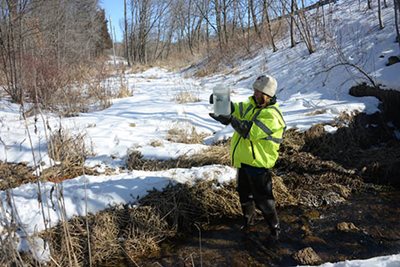.aspx?width=400&height=267) Whether used for drinking, recreation, or quiet respite, our region’s lakes, rivers, and streams enrich our everyday lives. As such, it’s critical that we plan for the long-term vitality of these signature resources — with help from community partners, water experts, and area residents.
Whether used for drinking, recreation, or quiet respite, our region’s lakes, rivers, and streams enrich our everyday lives. As such, it’s critical that we plan for the long-term vitality of these signature resources — with help from community partners, water experts, and area residents.
The Metropolitan Council’s Priority Waters List is a compilation of the most important regional waterbodies in the Twin Cities seven-county metro area. Once adopted, the new list will enable us to better prioritize and allocate staff time and potential grant dollars. It will also help us make more informed decisions to improve the quality of our water and experiences. We plan to use it to shape and implement more impactful policies — such as the 2050 Water Resources Policy Plan — that align with the priorities of local, regional, and state partners.
“We’ll use the Priority Waters List to anticipate and address emerging needs, so we can focus our limited resources to help manage and sustain regional waterbodies more efficiently," said Judy Sventek, manager of Water Resources.

Review the preliminary Priority Waters list, take a survey
Nearly 40 years after developing the first Priority Lakes List, the Met Council continues to enhance its findings every few years. The latest preliminary Priority Waters List is expanded to include rivers and streams and uses the most extensive datasets on record to help us determine which waterbodies should be prioritized for potential benefits.
But data isn’t enough. The Met Council seeks feedback from those most impacted by and interested in our waterbodies, including water resources professionals, planners, engineers, elected officials, and engaged residents.
Participants can complete a 10-question survey to share their insights about the region’s lakes, rivers, and streams, including suggestions for waterbodies they believe should be included on the list. Participants are asked to review the Met Council’s preliminary Priority Waters List before taking the survey.
“How we treat our most important resources helps define who we are,” said Sventek. “We want to empower people to be active agents in managing and sustaining our most important waterbodies. It’s about more than protecting our waters, it’s about sharing our values.”

Keeping score, capturing data, and prioritizing our future
Every Twin Cities waterbody was evaluated for the Priority Waters List across seven categories:
- Drinking water protection. The likelihood that a waterbody may impact the quality of a regional drinking water source if degraded.
- Recreation and tourism. The likelihood that a waterbody supports visitors and different types of recreation activities on the water or on shore.
- Healthy habitat. The likelihood that a waterbody provides good habitat for native wildlife and vegetation to thrive.
- Tranquil connection. An estimate of a waterbody’s potential to provide a tranquil outdoor experience.
- Equity. An estimate of a waterbody’s accessibility to communities that may generally have more limited access.
- Industry and utility. The degree to which a waterbody provides or supports utility or economic benefits for the region.
- Science and education. The extent to which a waterbody supports use for scientific studies or environmental education.
Each category has available datasets to produce a quantifiable score that can be used to assess a waterbody’s impact on the region. Waterbodies that are drinking water sources or score well in recreation and tourism or healthy habitat categories qualified for the Priority Waters List. Additionally, the scores from all seven categories were averaged into a "well-rounded" score, with waterbodies with the top scores also qualifying for the list.
“We want the people throughout the region to feel good about how we’re using our resources to meet their needs,” said Emily Resseger, environmental analyst and project manager. “The Priority Waters List sets us up for a better future where everybody can enjoy healthier, more sustainable water sources.”
Learn more about the Priority Waters List project
Contact
Emily Resseger, Environmental Analyst and Project Manager
[email protected]
651-602-1033